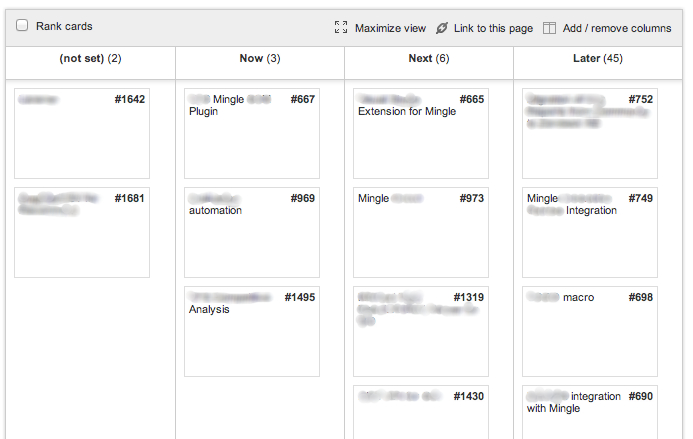Disclaimer: The statements and opinions expressed in this article are those of the author(s) and do not necessarily reflect the positions of Thoughtworks.

When starting a project, or a new phase of an existing project, it is common for teams to try and capture a decent breadth of stories and prioritize and estimate them to form a backlog. From that backlog the team can then start to organize the stories to form some sort of plan and an idea of the overall size.
This is often an intense process. Teams usually size projects using the entire story list forcing them to analyse stories in detail and make decisions at the point when they know the least. This low level of knowledge has teams struggling to achieve the impossible task of forming a complete picture. It also requires that they undertake a number of time consuming activities - prioritization, estimation etc. - on stories that may not be played for many months, if at all. Not only does this give them a false sense of confidence but it is wasteful.
The team I work with in Thoughtworks Studios devised a method of organizing our backlog that tackled these issues.
We start by gathering the stories we believe we need for the project. We then divide our backlog into three columns: Now, Next and Later. Each column is based on when we plan to deliver them: so the goal we are currently working towards (Now), the goal we believe we’ll work on once we’ve completed this one (Next) and anything Later than that. We then move our stories into these columns. Below is a screengrab of our backlog Story Wall in Mingle:

Now, Next, Later using the Mingle Story Wall
This organization gives us two things:
Once we have roughly sorted our stories we start by deeply analysingNow; we do a little bit of analysis about Next (but to a far lesser degree than Now); and we do no analysis of stories in Later as we know very, very little. Therefore, we can estimate with higher confidence the size of the work in Now; less, but some small confidence for Next; but any estimation of Later is considered futile and valueless.
We also apply the same thinking to completeness: so Now should be a fairly accurate picture of what we will deliver, Next is a starting point but likely to be quite volatile, and Later has no guarantees at all.
A side effect of this organisation is we consider anything in Later a pipe dream. The result is that Later becomes a dumping ground for anything we suspect may be required in the future. That doesn’t mean some stories may move into Next - and eventually move into Now - but chances are the majority will live out their days in the Later column.
Mingle's card wall provides the flexibility to manage your backlog in such a manner or to adapt to the way you'd like to manage your backlog, stories or defects. See how Mingle can help you effectively manage your requirements.
Disclaimer: The statements and opinions expressed in this article are those of the author(s) and do not necessarily reflect the positions of Thoughtworks.
